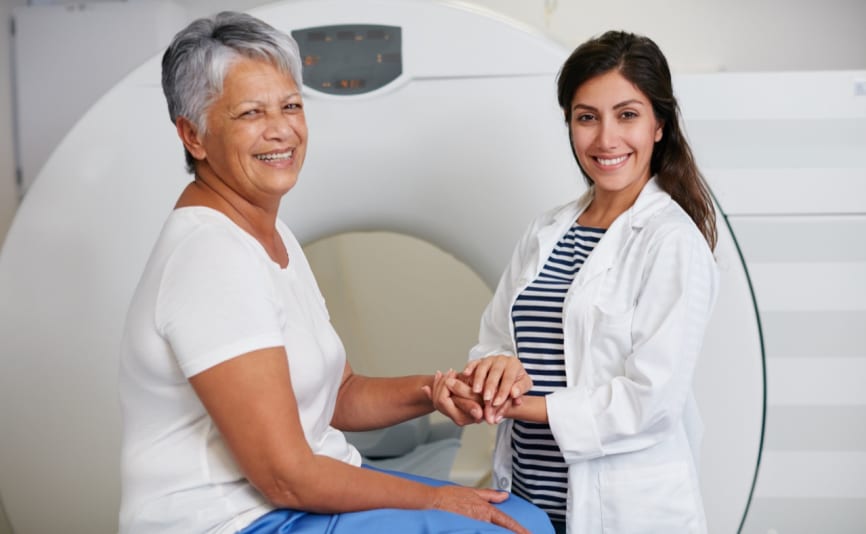Introduction
Sarcoma is a type of cancer that affects the body's soft tissues, such as muscle, fat, and connective tissue, as well as bones. It is an extremely rare form of cancer, which makes up fewer than 2% of all cancer diagnoses in the UK. In this article, we will discuss the different types of soft tissue and bone sarcomas, their symptoms, and the various treatments available for this condition.
What is sarcoma?
Sarcoma is a type of cancer that affects the body's soft tissues, such as cartilage, muscles, fat, connective tissues and blood vessels, as well as the bones. It is a general term for a group of different cancers.
Sarcomas are rare cancers affecting around 15,000 people in the U.S. each year, according to the National Cancer Institute. Sometimes, sarcoma can become a metastatic disease, which means it can spread to other body structures and invade healthy tissue.
What are the types of soft tissue sarcomas?
There are more than 70 subtypes of sarcoma, which can be classified in two main groups: soft tissue sarcomas and bone sarcomas. There are different types within these categories:
Soft tissue sarcoma
-
Liposarcoma: can arise in fat cells anywhere in the body.
-
Leiomyosarcoma: a sarcoma that originates in smooth muscle cells, which are found in the hollow organs of the body such as the intestines, blood vessels, bladder and uterus.
-
Synovial sarcoma: a type of sarcoma affecting the joints, such as the knee or ankle.
Bone sarcomas
-
Osteosarcoma: develops in the cells that form bone tissue, usually in the long bones of the body such as in the arms and legs.
-
Chondrosarcoma: arises in the cells that form cartilage, and can affect the bones and soft tissues.
-
Ewing sarcoma: usually occurring in children, this rare sarcoma affects the bones and surrounding soft tissues.
Is sarcoma benign or malignant?
Sarcomas are a type of soft tissue tumour that is always malignant (cancerous). There are other types of soft tissue tumours that are not malignant tumours, and these would not be sarcoma.
What is the difference between cancer and sarcoma?
Sarcoma is a specific type of cancer that usually begin in the bones and soft (or connective) tissues. They are extremely rare compared to other types of cancer, such as carcinoma, which tend to be attributed to 90% of all cancer cases. Carcinoma differs from sarcoma as it usually develops in epithelial cells, which cover internal organs and the body's outer surfaces, and affects the skin or mucous membranes.
Soft tissue sarcoma symptoms & symptoms of bone sarcomas
The symptoms of soft tissue sarcomas can vary depending on the different types of sarcoma and the location of the affected tissues. Common symptoms include a lump or mass that grows quickly, tenderness or swelling in the affected area, including bone pain, and difficulty moving the affected limb. In some cases, patients may also experience fatigue, reduced appetite, weight loss, and anaemia. Most lumps aren't sarcoma, as it is extremely rare, but it is important to seek advice from your doctor if you're experiencing any of these symptoms.
What is the process for diagnosing soft tissue sarcomas?
The process of diagnosing soft tissue sarcomas typically involves a physical examination, imaging tests (such as ultrasound, X-rays, MRI scans, or CT scans), and a biopsy. During a biopsy, a small sample of suspected cancerous tissue is taken from the affected area and analysed in a laboratory to determine if it is cancerous. If a bone sarcoma is suspected, a bone scan would be used.
What are the treatments for soft tissue sarcomas?
The treatments for soft tissue sarcomas can vary depending on the type and stage of the sarcoma, as well as the patient's overall health. If caught in its early stages, the most appropriate treatment can be provided sooner, to provide the best possible outcomes and reduce the risk of metastasis.
Common ways to treat sarcoma include surgery to remove the sarcoma, radiation therapy, and chemotherapy, to kill cancer cells and prevent them from reproducing. In some cases, a combination of treatments may be necessary, taking into account the risks of any damage to the surrounding healthy tissue.
Are there any sarcoma risk factors? What causes sarcomas?
There are several factors that can increase the risk of developing sarcomas, including age, exposure to high-energy radiation (such as in previous cancer treatment using radiotherapy), and a family history of some genetic conditions (including familial retinoblastoma and type 1 neurofibromatosis). Exposure to certain chemicals and viruses can also increase the risk of sarcoma.
The exact cause of sarcomas is not fully understood, but it is believed to be related to genetic mutations and changes in the DNA of cells in the soft tissues and bones.
Conclusion
In conclusion, soft tissue sarcoma is a type of cancer that affects the body's soft tissues. There are many different subtypes, and their symptoms can vary depending on the type and location of the affected tissue. There are treatment options available for sarcoma, and treatment depends on the location and size of the tumour and whether the cancer has metastasised (spread). If found at an early stage, the outcomes of treatment tend to be more successful.
Sources used
https://sarcoma.org.uk/about-sarcoma/what-is-sarcoma/
https://www.mayoclinic.org/diseases-conditions/sarcoma/symptoms-causes/syc-20351048
https://sarcoma.org.uk/about-sarcoma/diagnosing-sarcoma/
https://www.nhsinform.scot/illnesses-and-conditions/cancer/cancer-types-in-children/osteosarcoma
https://www.cancer.gov/pediatric-adult-rare-tumor/rare-tumors/rare-soft-tissue-tumors/leiomyosarcoma
https://www.cancer.org/cancer/soft-tissue-sarcoma.html
https://www.healthline.com/health/carcinoma-vs-sarcoma






